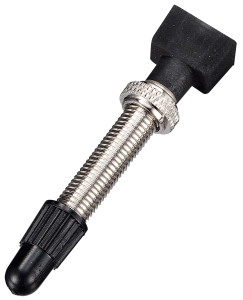While Pro-Lite might not be an every day name for many U.S. cyclists, the company offers an expansive catalog of wheels and frames all from their own Taiwanese manufacturing facility. The company prides themselves on being the biggest hand built wheel company in the world which includes both carbon and aluminum hoops. Each and every wheel goes through an extremely thorough build process with stringent QC protocols along the way.
Now, the company is adding one more wheel to that line up with the new Bortola A21. Slating in under the popular Bracciano A27, the Bortola is not only quite a bit wider, it’s tubeless ready as well. If light, wide, tubeless, and rim brake only sound appealing for your next wheelset, get the details next…
Built to be a light weight all-rounder, the Bortola A21 wheels get their name from the 21mm deep 6061 aluminum clincher rim.
Sleeved and welded, the wheels are listed as tubeless ready with the addition of a tubeless valve set which is available separately. Inside, you’ll find a wide profile rim channel with a 17.5mm internal and 23.2mm external width.
Combined with the straight pull hubs and Sandvik bladed spokes (radial front, 2x rear), the wheels come in at a claimed 650g for the front and 823g for the rear, and a combined 1473g weight for the set. The hubs use a fairly standard 2 bearing front and 4 bearing rear set up, each with Japanese EZO sealed cartridge bearings. Available with either Shimano 9/10/11 or Campagnolo freehub bodies, the QR only hubs are sold in 100/130mm widths.
Available early 2015, price is TBD.




